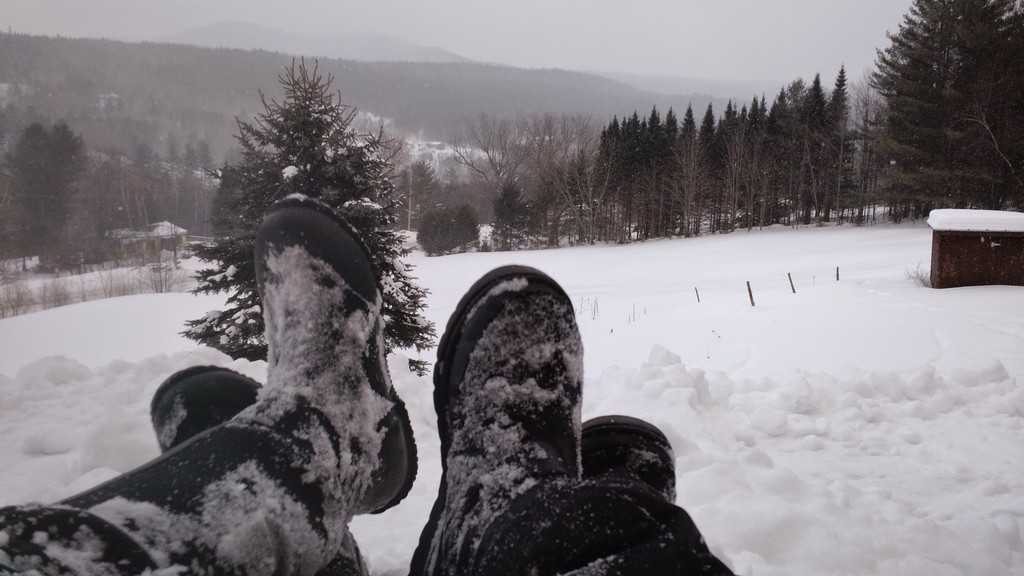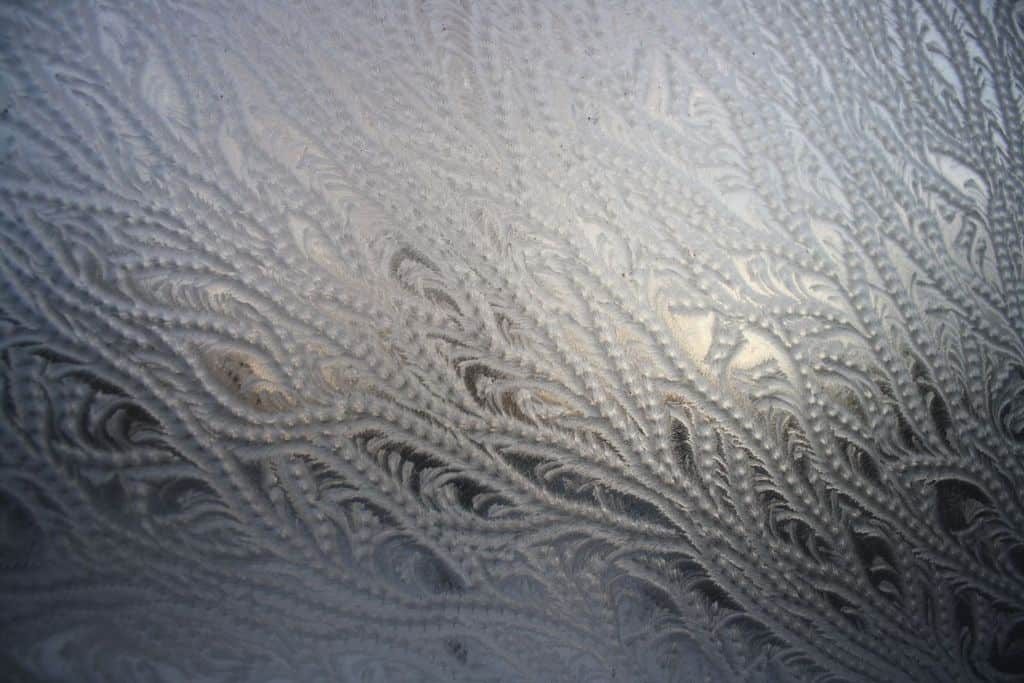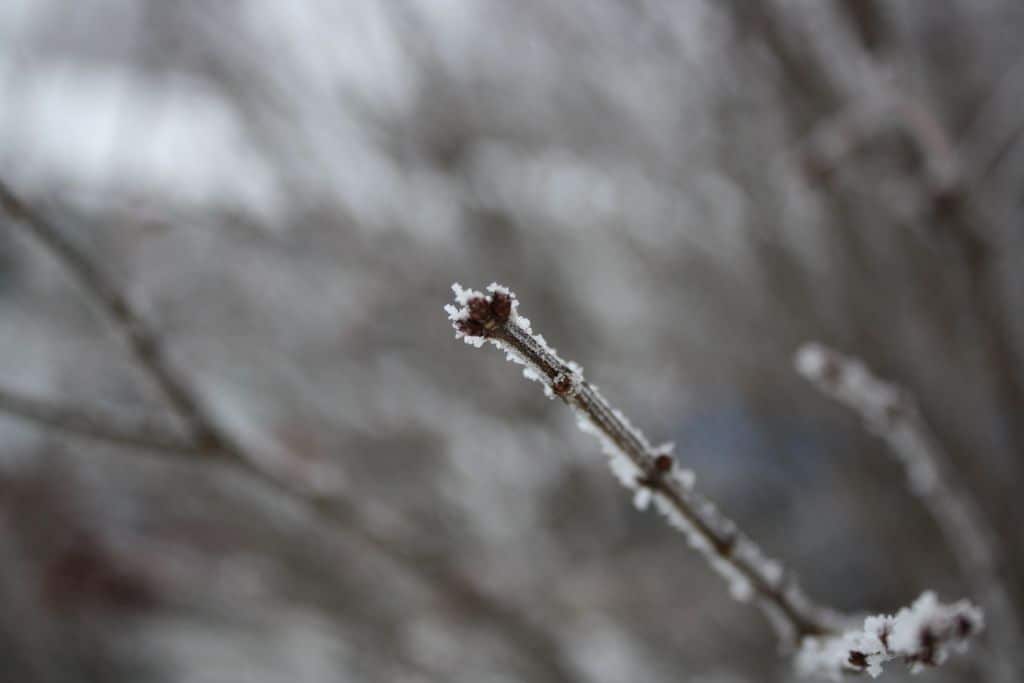It’s here…..are you ready? We’ve already had to scrape the frost from our car windows and shovel our driveways and sidewalks… And meteorological winter is upon us.

If you can look past the cold and the shoveling and scraping, snow and frost can really be quite beautiful. Really.
“Under the microscope, I found that snowflakes were miracles of beauty, and it seemed a shame that this beauty should not be seen and appreciated by others. Every crystal was a masterpiece of design, and no one design was ever repeated. When a snowflake melted, that design was forever lost. Just that much beauty was gone, without leaving any record behind.” — Wilson Bentley (1865-1931)
We know there are different types of precipitation. Snow, sleet, freezing rain, hail, and graupel. (Seriously, there is a form of precipitation called graupel).
What is the difference between how sleet and freezing rain are formed?
We all know what sleet is when we are walking or driving in it. But what is sleet? Sleet forms when raindrops freeze in the air while they are falling. The raindrop then has to encounter warmer air, which again melts it and turns it into a raindrop again. Then, if the raindrop encounters another layer of air where the temperature is below 32°F it can refreeze and form sleet. However, while freezing rain looks like a gentle rain, when a raindrop is cooled to 32°F and then hits a surface it forms a thin film of water which quickly turns into a continuous sheet of ice. Freezing rain can cause more problems than sleet or snow because it makes travel more treacherous and can coat power lines and tree branches causing them break from the weight..
So, now, what the heck is graupel? In Understanding Weather and Climate, the authors state that graupel is formed, “When an ice crystal takes on additional mass by riming, its original six-sided structure becomes obscured and its sharp edges are smoothed out.” This new ice may have small air bubbles which can give it a milky-white appearance. (Riming is when ice crystals fall through a cloud and collide with super-cooled droplets and those droplets freezes on the ice crystals.) So, now when you are being bombarded by little ice pellets, you’ll know that is graupel! If graupel remains in the clouds, it provides the nuclei from which hail is formed. An updraft carries the groupel pellet above the freezing level, which forms the core of the hailstone. The pellet falls from the updraft, collides with liquid droplets that coat it in a film of water. If the pellet is caught in another updraft, the layer of water freezes, creating another coat of ice…..

Skiers love powder and kids love snow ball fights. Why are there different types of snow? Snow results from the growth of ice crystals from several different methods. If a crystal from the cold, upper reaches of a cloud falls through to a warmer environment, the combination of moisture and temperature will create a particular structure at its core and other structures will layer on it. If riming is the dominant growth process, the crystals form a dense, wet snow pack – perfect for snowball fights, forts and snow people. That wet snowfall is heavy and not much fun for snowblowers and those who must shovel. Powder is formed when very cold snow falls and has smaller snowflakes than the more dense snowfall. Because they have a lower density the crystals have less adhesion and don’t pack well. Skiers love to ski this powder snow!

And then we come to frost….and frozen dew….and black ice…
Briefly, frost is when the temperature is lowered to 32°F and very small ice crystals are deposited onto solid surfaces giving them a white appearance. That type of frost (sometimes called hoar frost) happens with the transformation of water vapor directly into ice. Frost is easy to remove with window scraper (or a credit card!)

Frozen dew, on the other hand, begins when the temperatures are slightly above 32°F and then cool to below freezing, which causes a thin, continuous layer of ice to form. This is what is difficult to remove from your windshield, get your key into your car door, or even open the door…. of course, the advantage of not being able to get into your car means you won’t be out driving on black ice (the frozen dew that forms on road surfaces and is nearly impossible to see).
Now, as you slip, slide, shovel, and ski your way through the winter, you’ll know why! Be careful out there!!
Resources:
Aguado, Edward. 2010. Understanding weather and climate. Upper Saddle River, NJ : Pearson Education. Engineering Library QC871.3 .A38 2010
Other Resources:
Black Ice: How to Spot This Winter Driving Danger. 2015. AccuWeather, Inc.
Guide to Frost. February 1, 1999. Accessed November 24, 2015. SnowCrystals.com
Rauber, Robert M. 2002. Severe and hazardous weather. Dubuque, IA : Kendall/Hunt Pub. Co.
Resources about the uniqueness of snowflakes:
It’s True That No Two Snowflakes Are Alike, But not For The Reason You Think. by Cate Matthews, January 10, 2014. HuffPost Science. TheHuffingtonPost.com Inc.
The Science of Snowflakes, and Why No Two Are Alike. by Julia Griffin, December 22, 2011. PBS Newshour. NewsHour Productions LLC.
Snowflakes All Fall In One of 35 Different Shapes. by Marissa Fessenden, December 30, 2014. Smithsonian.com.
Resources about hypothermia, frostbite
Diseases and Conditions Hypothermia. by Mayo Clinic Staff, June 18, 2014. Mayo Foundation for Medical Education and Research.
What is Hypothermia? Hypothermia: causes, symptoms and treatment. WebMD.com
Diseases and Conditions Frostbite. by Mayo Clinic Staff, October 15, 2014. Mayo Foundation for Medical Education and Research.
Frostbite. MedlinePlus. U.S. National Library of Medicine, U.S. Department of Health and Human Services, National Institute of Health.